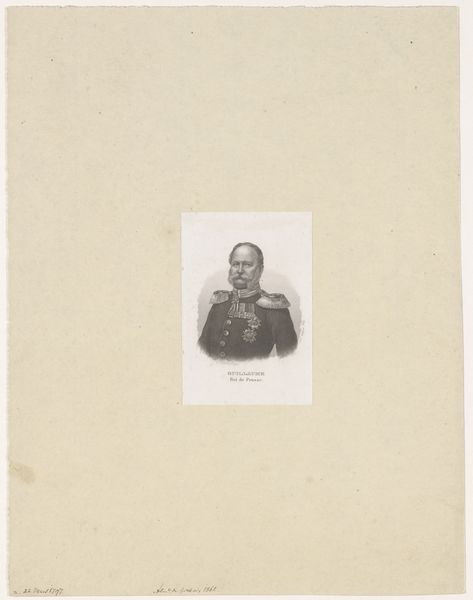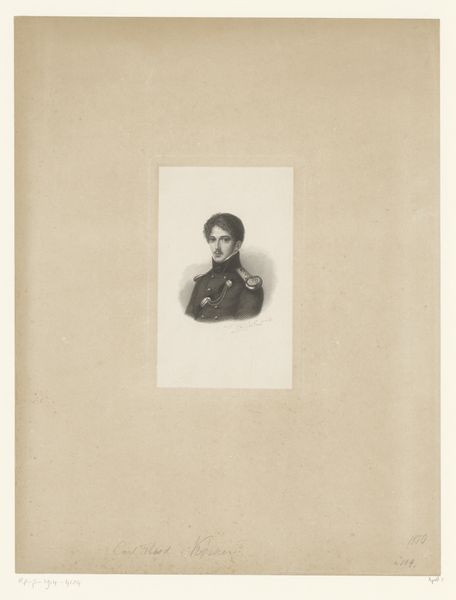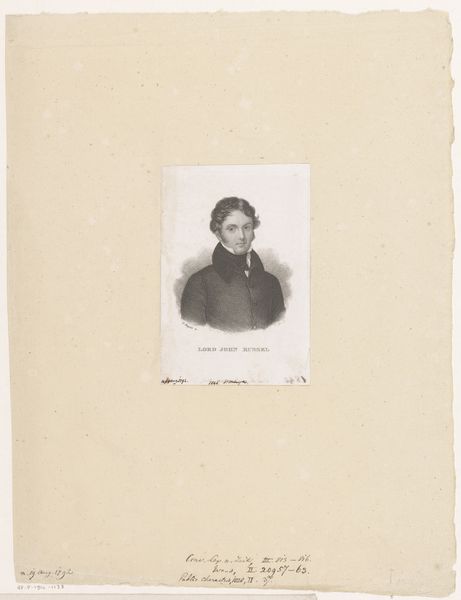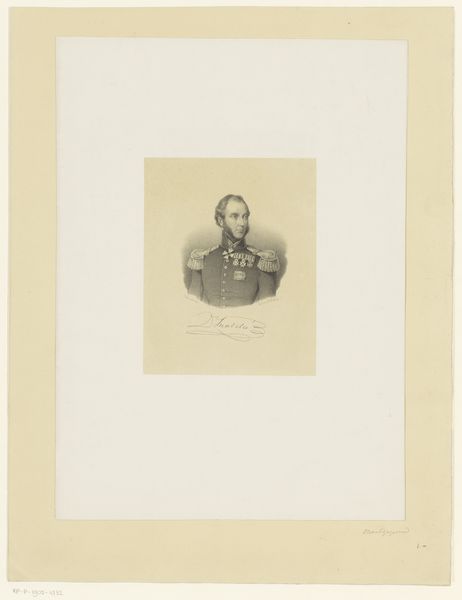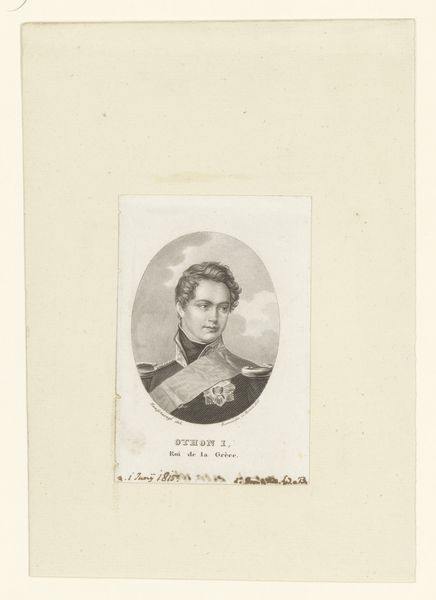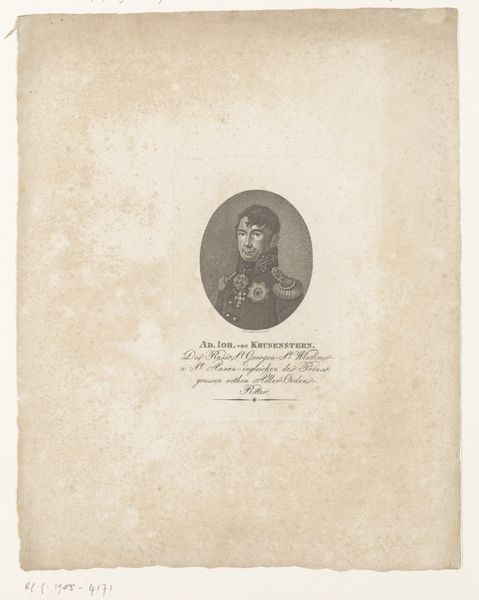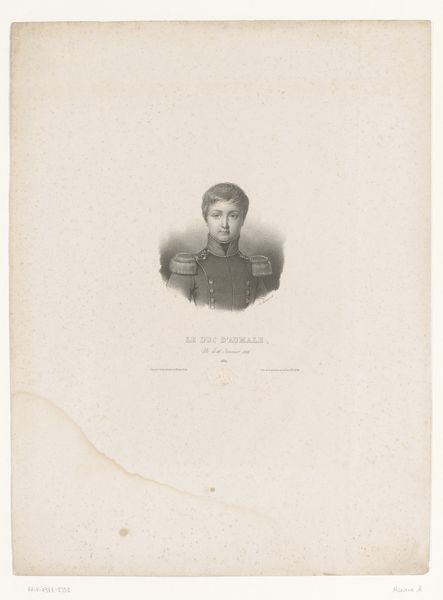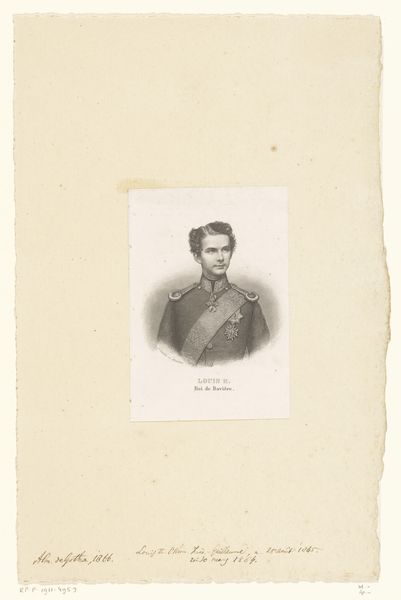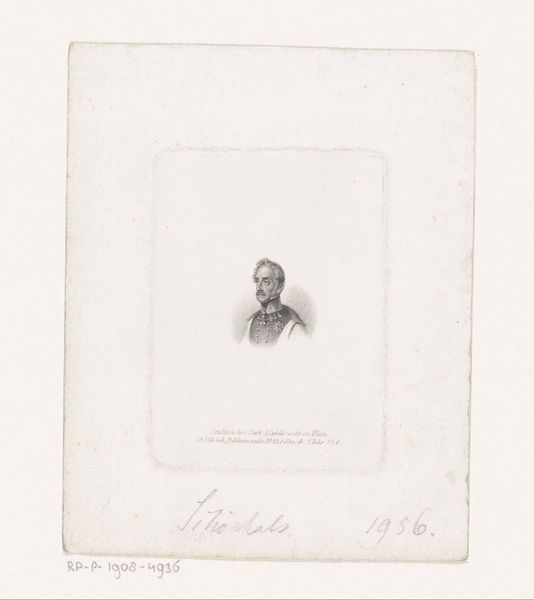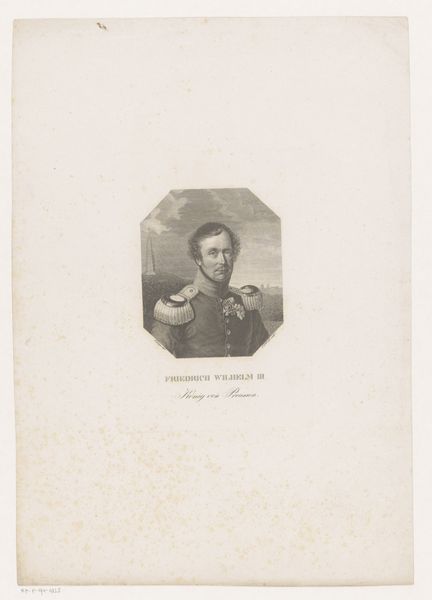
print, engraving
#
portrait
# print
#
history-painting
#
academic-art
#
engraving
#
realism
Dimensions: height 108 mm, width 74 mm
Copyright: Rijks Museum: Open Domain
Editor: Here we have a print of "Portret van Adalbert, prins van Pruisen," made between 1830 and 1911 by August Volkert. It seems to be an engraving. There's a certain formality and precision to it that’s very striking. How would you interpret this work? Curator: The formal portraiture, particularly of Prussian royalty, needs to be understood in its political context. Portraits like these were often commissioned to project power, legitimacy, and stability. Consider how the uniform, the sharp details achieved through engraving, and even the inscription "Prins de Pruessen" all contribute to a very specific message. What kind of message do you think that might be? Editor: I suppose it projects an image of strength, military prowess perhaps? The uniform is pretty emphatic. Was Volkert, the artist, perhaps employed directly by the Prussian court to create these kinds of images? Curator: Possibly, or it could have been a commercial venture, aiming to capitalize on the public's interest in royalty. The distribution of prints allowed these images to circulate widely, shaping public perception and reinforcing the established social order. Do you notice any element that hints at a particular class? Editor: Definitely the high level of detail in his attire suggests that, also maybe even the seriousness in his eyes hints at high societal expectations. It’s fascinating how many layers are at play here! Curator: Exactly! By examining these images through the lens of social and political history, we can start to unpack their intended function and the values they were meant to promote. Every visual choice supports a broader narrative. Editor: I never thought about portraiture this way before. I always thought of it as capturing just the likeness of the person, not their persona through historical and cultural contexts. Thank you for opening my eyes.
Comments
No comments
Be the first to comment and join the conversation on the ultimate creative platform.
